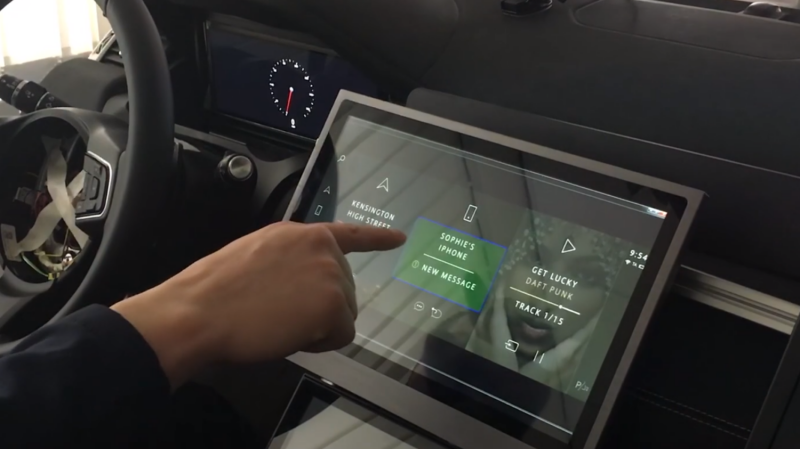I’m not a fan of touchscreen infotainment systems in cars. Let’s get that out of the way first. I even made a whole rant about it as a guest writer on Wapcar.my. Furthermore, I suspect that I might not be the only one with this opinion. Many are wising up to the difficulty of using touchscreen interfaces while driving. However, Jaguar claims to have made a breakthrough for touchscreen interfaces by making it contactless. As counter-intuitive as that sounds, it does look promising.
A screen not for touching
Called ‘predictive touch’ and developed in partnership with the University of Cambridge, Jaguar’s contactless touchscreen feature can predict what the user intends to touch without physically touching it. According to Jaguar, the system achieves this by using sensors paired with artificial intelligence algorithms.
The system tracks the user’s hand and eye movements from a raft of vision- and radio-based sensors. From there the data is then fed through some algorithms to “speed up the interaction”. This enables the system to guess what the user is trying to press and pre-select it for them.
Jaguar’s ‘predictive touch’ sounds similar to BMW’s ‘gesture control’, however, the latter doesn’t interact with the on-screen interface elements. BMW’s system merely offers a supplementary control feature. Jaguar’s system, on the other hand, is a lot more complicated in translating hand movements onto a touchscreen interface.
How does Jaguar ‘predictive touch’ help users?

While ‘predictive touch’ is still very much a prototype, Jaguar’s demonstration video does show a very promising concept. With this contactless feature, the system can overcome the touchscreen interface’s biggest hurdles. And not because the press release keeps banging on about personal hygiene in this COVID-19 era.
According to Jaguar, lab-tests and on-road trials can reduce a driver’s touchscreen interaction effort and time by up to 50%. If you have ever tried to adjust the radio or navigation system on a touchscreen interface while keeping your eyes on the road, this is a breakthrough. Like that favourite bedroom advice, the less time you spend seeing where your hands are going, the better.
Addressing touchscreen’s fundamental problem

The problem with touchscreen infotainment systems is a fundamental one. Full touchscreen interfaces are great when it is resting still on the platform or in the palm of your hand. It is not so great in an environment that moves around as you would find inside a car.
Anyone can walk and carry a full pint in their hand or a bucket on their head. That is easy because your body is great at isolating your head and limbs from the rest of its movements. However, points of contact in a car, buttons, switches, and screens, are fixed to the car. And these touchpoints will be moving with the car, separate to the movements of your head and limbs.

This has never been a problem for operating traditional physical switches. Most in-car switches are located close to where your hand can easily reach when it is in a resting position. Its physical presence also allows you to instinctively operate it without looking.
Touchscreen infotainment systems, on the other hand, are located higher and closer to a driver’s line of sight. While its placement is meant to help drivers see the screen without taking their eyes off the road for too long, it is not a convenient spot for your hands. You would have to stretch out your hands to operate it. In a shaking cabin, it will be very tricky to hit the right on-screen button even if you are looking at it. Ever try playing darts while piss drunk? You’d be lucky to even hit the wall the board is nailed to.
Coming soon to a Jaguar/Land Rover near you

For now, Jaguar has not mentioned any exact model on which this feature would be introduced. So far Jaguar has stated that the software behind it has “reached high technology readiness levels” and can be integrated into existing touchscreens.
However, much of what makes this feature possible is hardware-based. Likewise, Jaguar says the feature needs “the correct sensory data” to work. Unless the company’s current product offerings already have the necessary framework to support the additional sensors, we might have to wait a while longer before this tech is available in the market. We might even have to wait for the next Jaguar XJ flagship, whenever that is coming. Either way, it is a technology that can’t soon enough.

